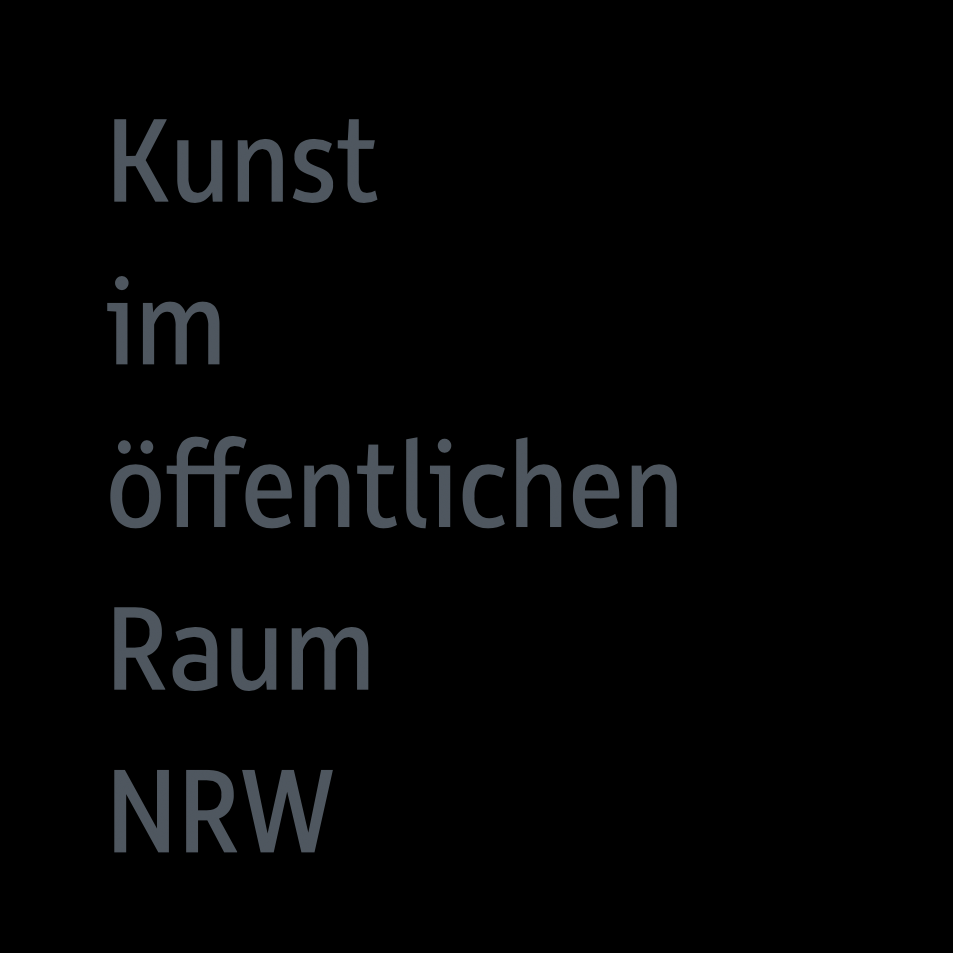Toleranz durch Dialog / Tolerance Through Dialogue
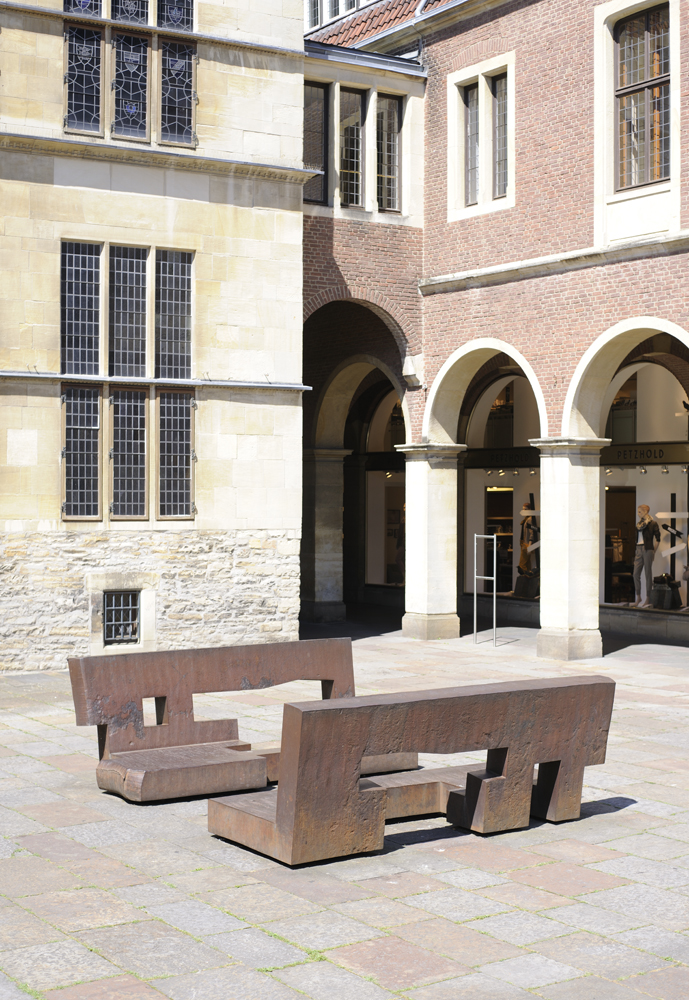
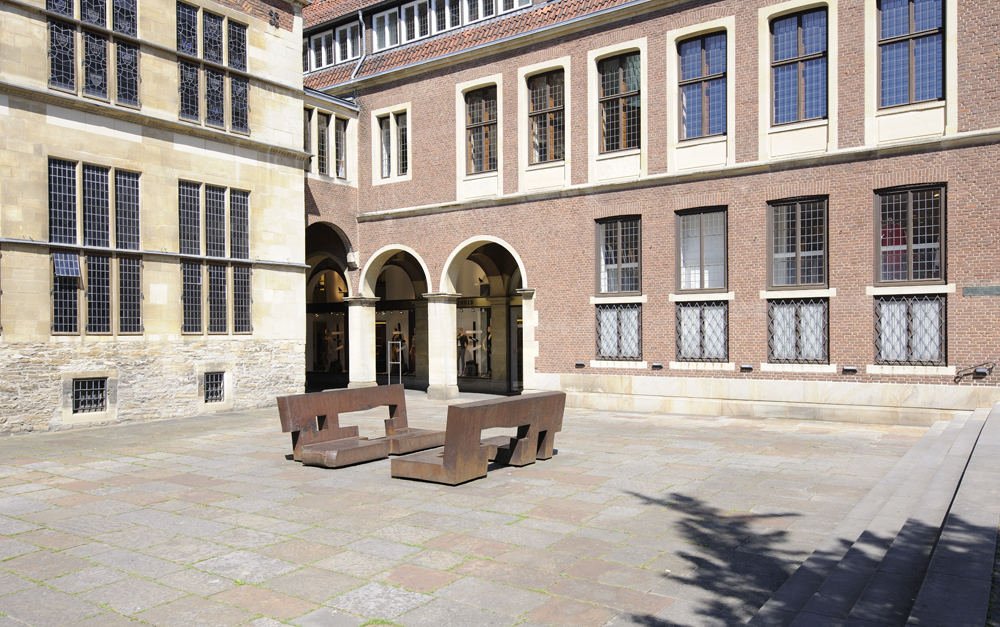
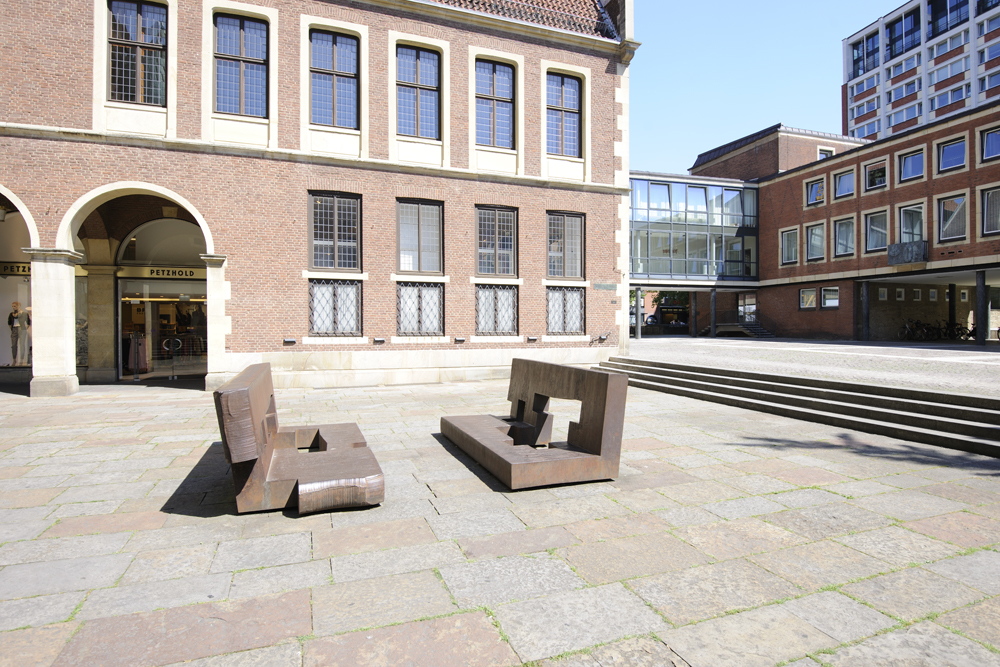
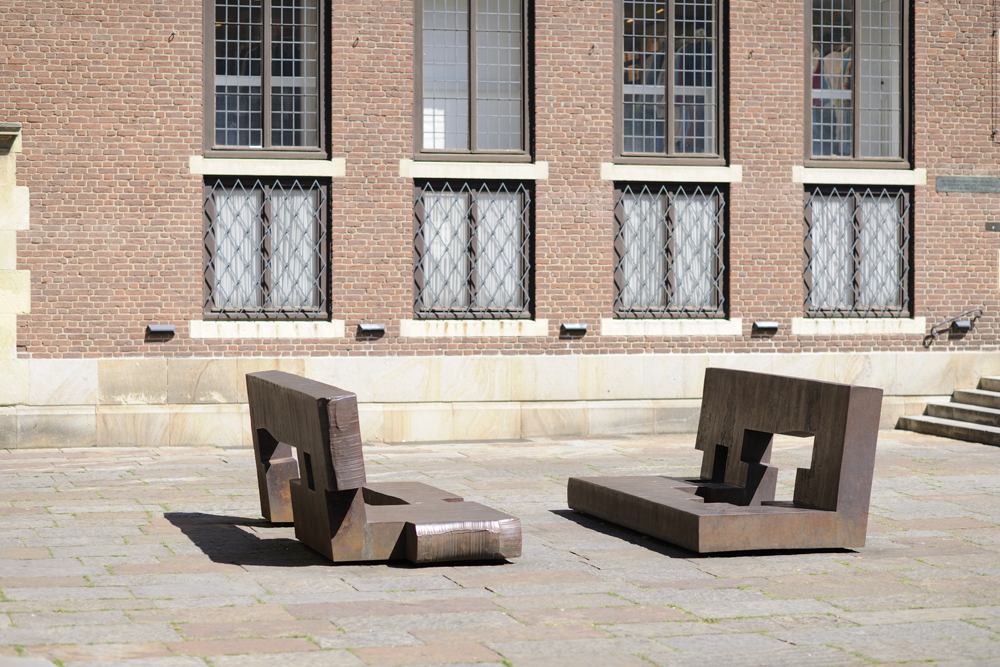
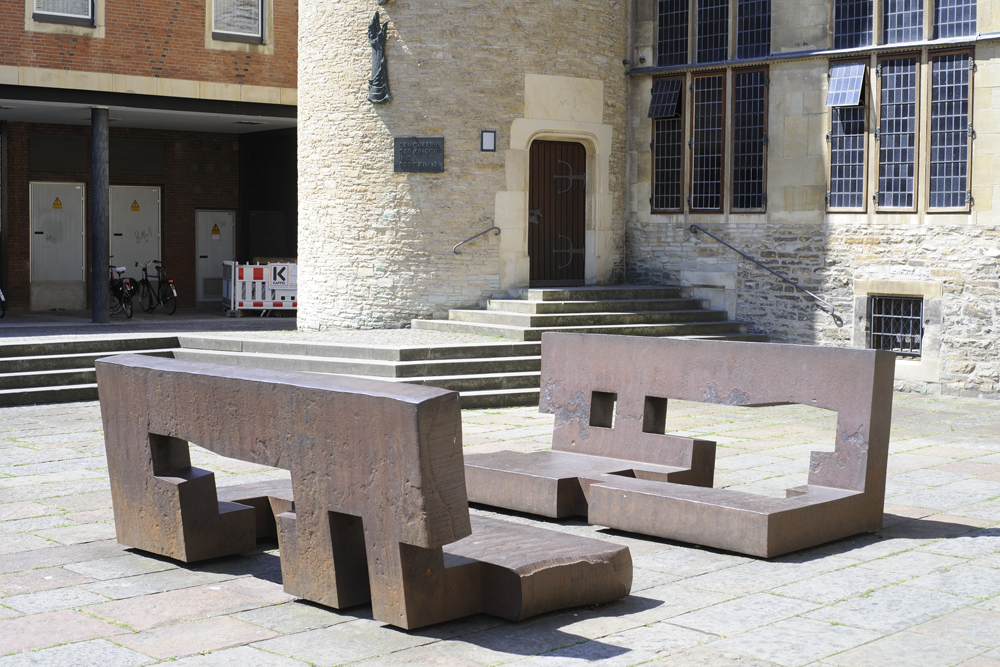
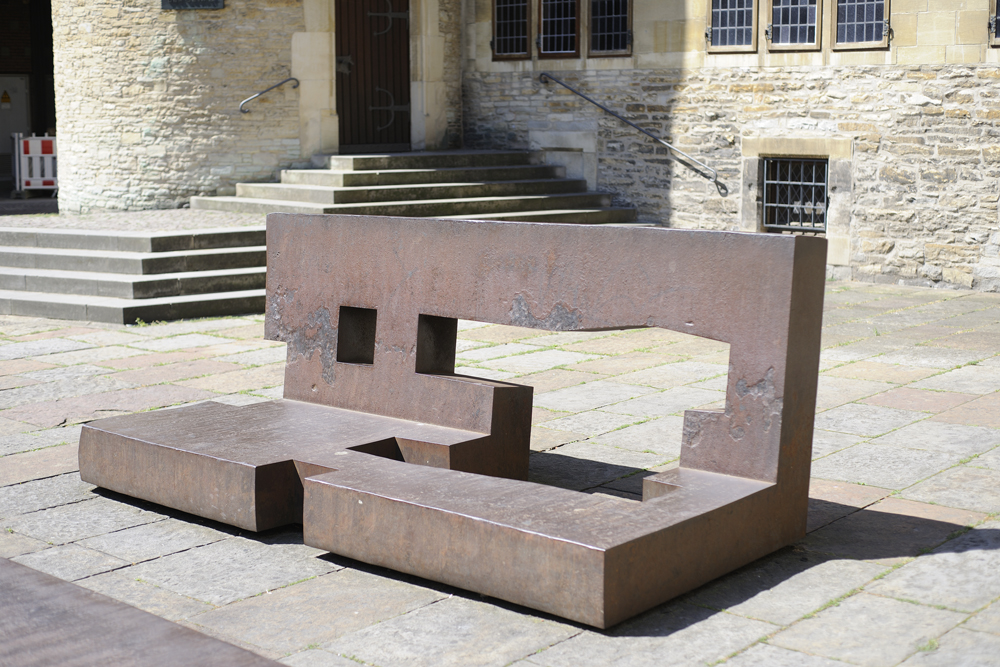
Internationally renowned Basque sculptor Eduardo Chillida’s Tolerance Through Dialogue is as relevant to modern viewers as it is a reference to the past: The Thirty Years’ War ended with the Peace of Westphalia, a treaty that was signed in the neighboring Rathaus der Stadt Münster in 1648. Those who took part in the years of negotiations sat across from each other on long, carved wooden benches in a room that is now called the Friedenssaal, or peace hall.”
Chillida echoes the basic form of those benches in his sculpture, which consists of two L-shaped objects that are positioned to face each other. Each object is constructed out of Corten steel and firmly anchored in place. The geometric cutouts in both objects are similar, but not identical. As such, they seem to be approaching each other, encouraged by the play of light and shadow, creating a bridge between the two elements.
With this work, the artist succeeds in making reference to the specific topographical and historical conditions of the location, while also creating an autonomous and abstract sculpture that is equally enduring as it is relevant to contemporary observers in terms of content.
The realization of the work was preceded by a long planning phase. Chillida had already been working on a design for this sculpture in the 80s. However, he first presented another work with a similar intention at the 1987 Skulptur Projekte: the Monumento a la Tolerancia / Monument for Tolerance, which was on loan from Sevilla and installed at Servatiikirchplatz.
It wasn’t until 1993, on the occasion of the 1200th anniversary of the city of Münster and the 350th anniversary of the start of peace negotiations to end the Thirty Years’ War, that the sculpture Tolerance through Dialogue arrived at its intended destination in Münster.
Additional information:
http://wiki.muenster.org/index.php/Toleranz_durch_Dialog
http://www.muenster.de/stadt/skulpturen/toleranz.html
Eduardo Chillida
← Zur Startseite
Münster, Platz des Westfälischen Friedens (Rathaus courtyard)
